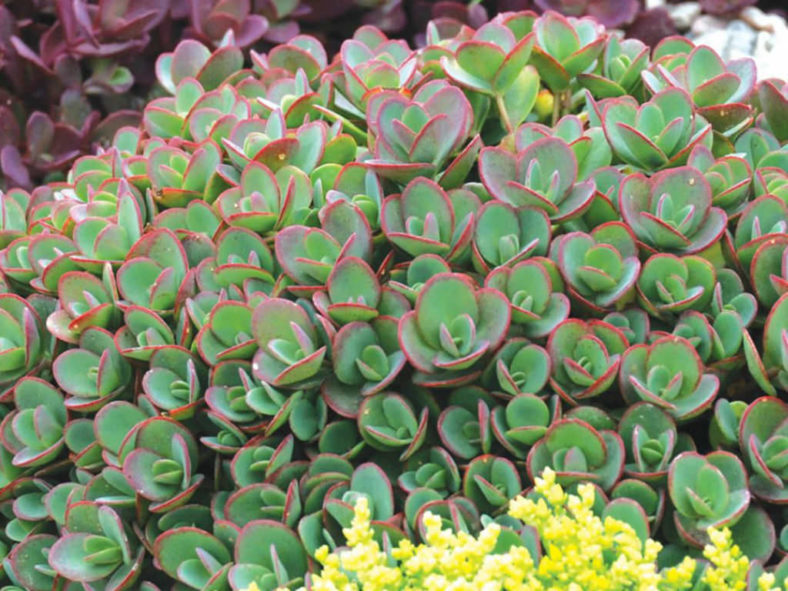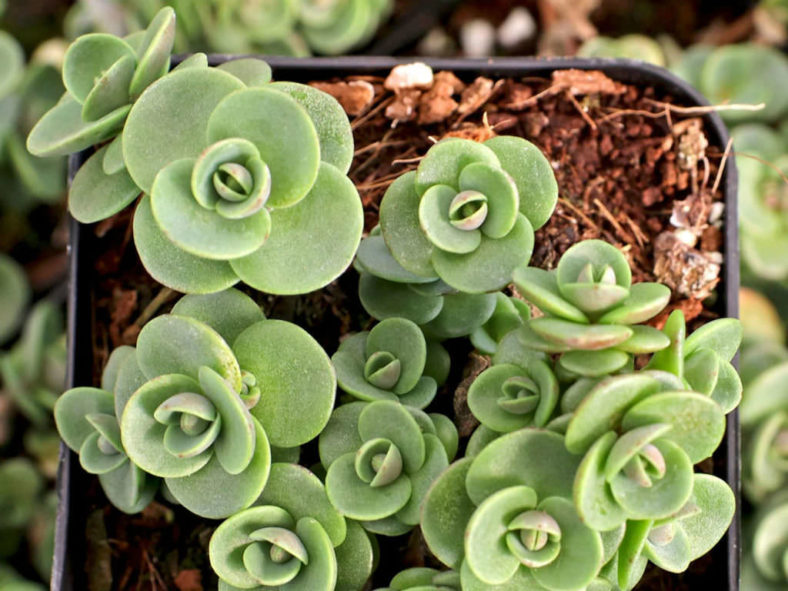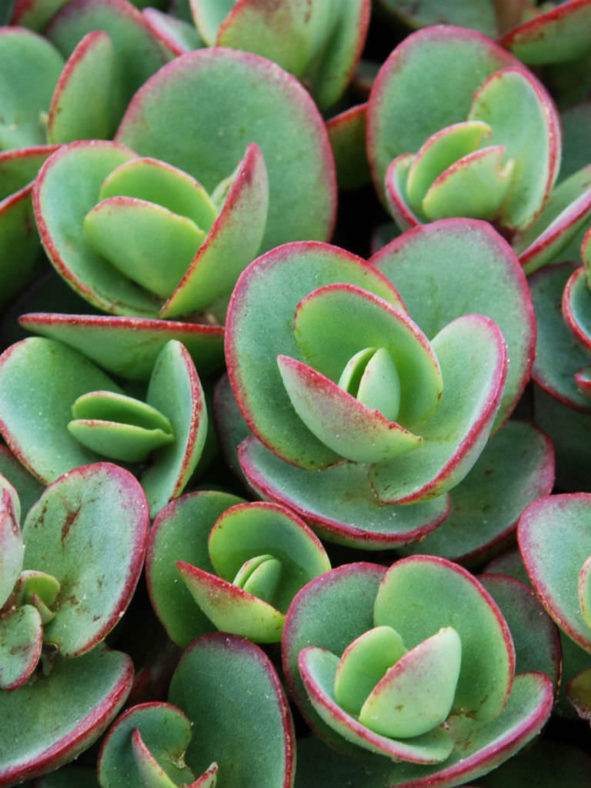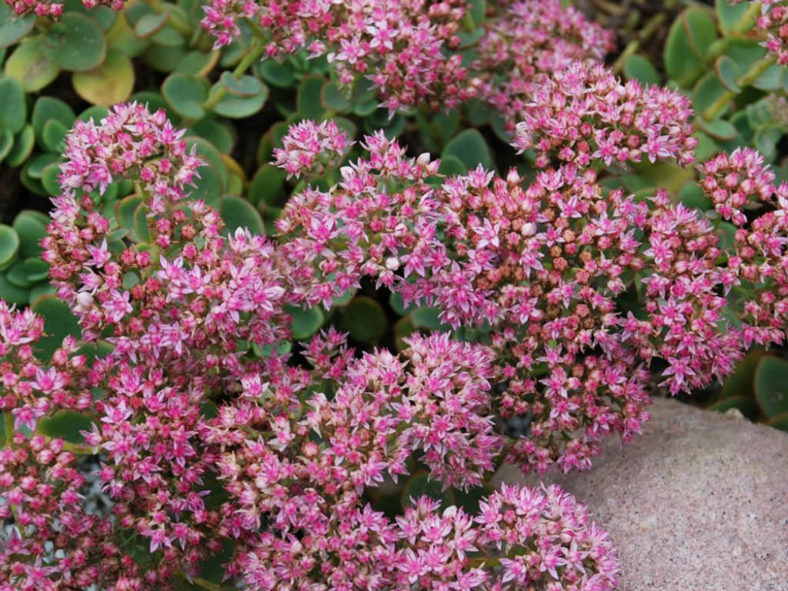Scientific Name
Hylotelephium 'Lime Zinger'
Common Name(s)
Lime Zinger Stonecrop, SunSparkler Lime Zinger Stonecrop
Synonym(s)
Hylotelephium 'Lime Zinger' SunSparkler®, Sedum 'Lime Zinger', Sedum 'Lime Zinger' SunSparkler®
Scientific Classification
Family: Crassulaceae
Subfamily: Sempervivoideae
Tribe: Telephieae
Genus: Hylotelephium
Origin
Hylotelephium 'Lime Zinger' is a patented hybrid (number PP24632P2) and part of the SunSparkler® series from the breeding work of Chris Hansen.
Description
Hylotelephium 'Lime Zinger', also known as Sedum 'Lime Zinger', is a low-growing succulent with small, rounded, bright lime green leaves edged in cherry red when grown in full sun. It is a beautiful, non-aggressive ground cover that can reach a height of only about 4 inches (10 cm) with a spread of 18 inches (45 cm). The foliage dies back to the ground in the winter, and new growth appears in the spring.
The rose-pink flowers appear in terminal clusters from late summer to early fall and last several weeks.

How to Grow and Care for Hylotelephium 'Lime Zinger'
Light: This succulent prefers full sun. It tolerates light to partial shade in hot summer climates but will produce weak, floppy growth when grown in too much shade. Plant your H. 'Lime Zinger' in an area of your garden with 6 hours of sunlight daily.
Soil: H. 'Lime Zinger' does not need rich soil but excellent drainage. Choose a commercial potting mix for succulents, or make one yourself.
Hardiness: This plant is cold-hardy and tolerant of heat and drought, making it a popular outdoor succulent. H. 'Lime Zinger' can withstand temperatures as low as -30 to 30 °F (-34.4 to -1.1 °C), USDA hardiness zones 4a to 9b.
Watering: The best way to water H. 'Lime Zinger' is to use the "soak and dry" method. Get the soil completely wet, and then wait until it is dry before watering again.
Fertilizing: Feed annually with a balanced fertilizer. Apply the fertilizer to the soil according to the package directions in spring as new growth appears.
Repotting: Plants in containers require little more care than those in gardens. Repot your H. 'Lime Zinger' when it outgrows its current pot by moving it to a larger pot to hold the plant better. Spring is the best time to repot this plant. Make sure the soil is dry before you begin the repotting process.
Propagation: This succulent can be grown from seeds, division, or stem cuttings. Sow seeds in spring. Dividing your H. 'Lime Zinger' is easy and can be carried out at almost any time in the growing season, though it is probably best done in spring or early summer. Propagate by stem cuttings in summer.
Learn more at How to Grow and Care for Hylotelephium.
Toxicity of Hylotelephium 'Lime Zinger'
H. 'Lime Zinger' can be mildly toxic to humans and animals.
Forms of Hylotelephium 'Lime Zinger'
Links
- Back to genus Hylotelephium
- Succupedia: Browse succulents by Scientific Name, Common Name, Genus, Family, USDA Hardiness Zone, Origin, or cacti by Genus
Photo Gallery
Click on a photo to see a larger version.


